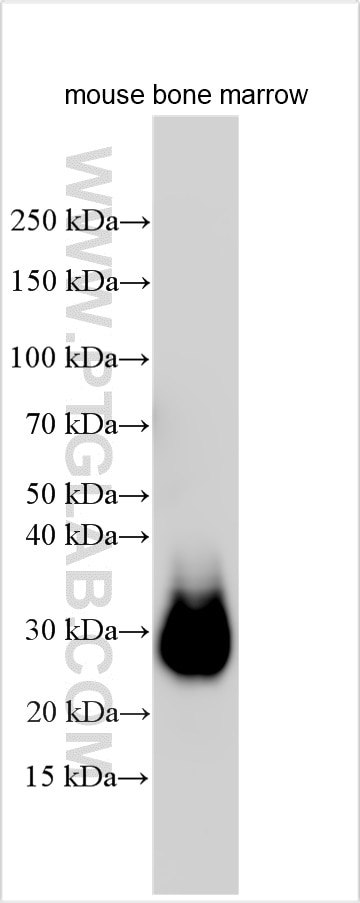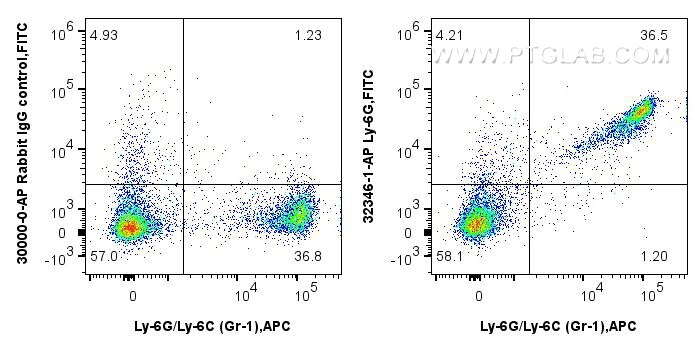Tested Applications
| Positive WB detected in | mouse bone marrow |
| Positive FC detected in | mouse bone marrow cells |
Recommended dilution
| Application | Dilution |
|---|---|
| Western Blot (WB) | WB : 1:500-1:2000 |
| Flow Cytometry (FC) | FC : 0.25 ug per 10^6 cells in a 100 µl suspension |
| It is recommended that this reagent should be titrated in each testing system to obtain optimal results. | |
| Sample-dependent, Check data in validation data gallery. | |
Product Information
32346-1-AP targets Ly-6G in WB, FC, ELISA applications and shows reactivity with mouse samples.
| Tested Reactivity | mouse |
| Host / Isotype | Rabbit / IgG |
| Class | Polyclonal |
| Type | Antibody |
| Immunogen | Recombinant protein Predict reactive species |
| Full Name | lymphocyte antigen 6 complex, locus G |
| Calculated Molecular Weight | 14 kDa |
| Observed Molecular Weight | 20-30 kDa |
| GenBank Accession Number | NM_001310438.1 |
| Gene Symbol | Ly-6G |
| Gene ID (NCBI) | 546644 |
| Conjugate | Unconjugated |
| Form | Liquid |
| Purification Method | Antigen affinity Purification |
| UNIPROT ID | P35461 |
| Storage Buffer | PBS with 0.02% sodium azide and 50% glycerol, pH 7.3. |
| Storage Conditions | Store at -20°C. Stable for one year after shipment. Aliquoting is unnecessary for -20oC storage. 20ul sizes contain 0.1% BSA. |
Background Information
Ly-6G (lymphocyte antigen 6 complex, locus G), also known as Gr-1, is a 21-25 kDa, glycosylphosphatidylinositol-anchored protein expressed on myeloid lineage cells in mouse bone marrow (PMID: 8360469). The expression of Ly-6G increases on neutrophils as they differentiate from immature cells in the bone marrow to mature cells in the blood and spleen (PMID: 8890901).
Protocols
| Product Specific Protocols | |
|---|---|
| WB protocol for Ly-6G antibody 32346-1-AP | Download protocol |
| Standard Protocols | |
|---|---|
| Click here to view our Standard Protocols |





